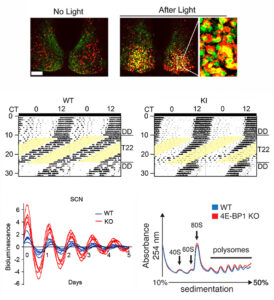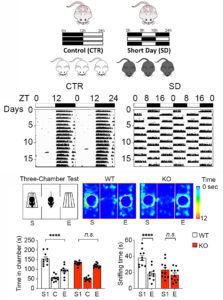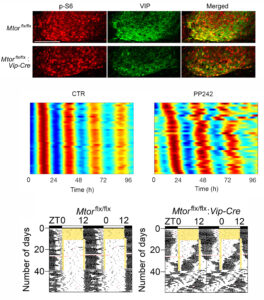Research

1. Understanding translational control mechanisms in the mammalian circadian clock: We found that the translation control mechanisms by the evolutionarily conserved mTOR and eIF2 signaling pathways are important for the function of central and peripheral circadian clocks. The delineated signaling mechanisms provide potential novel molecular targets for therapeutic intervention of the body clock function.

2. Identifying a role for circadian clock dysfunction in the pathogenesis of autism spectrum disorders (ASD): We found that chronic disruption of mouse circadian rhythms by light during neurodevelopment leads to autistic-like phenotypes in the adulthood. We also found that deletion of the essential clock gene Bmal1 leads to significant autistic-like phenotypes, which is associated with cerebellar mTORC1 hyperactivation.

3. Defining physiological functions of mTOR in the brain: We found diverse mTOR functions in neurophysiology. mTOR signaling is critical for regulating circadian rhythms, olfaction, and sleep.